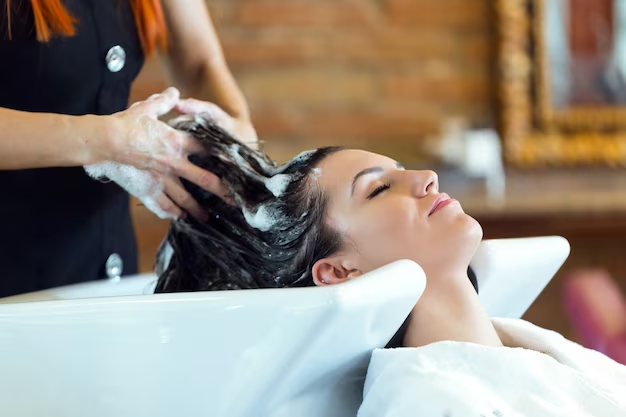Maintaining healthy hair requires consistent care, attention, and the right products to suit individual needs. This guide will walk you through the essentials of hair care, helping you understand how to nurture your hair and keep it looking its best.
Understanding Your Hair Type
The first step in any effective hair care routine is identifying your hair type. Hair types generally fall into one of the following categories:
- Straight: Lacks natural curl, often smooth but may get oily quickly.
- Wavy: Has a gentle wave, tends to frizz in humidity.
- Curly: Forms loops or spirals, usually dry and prone to frizz.
- Coily: Tightly curled or kinked, often fragile and requires more moisture.
Understanding your hair type helps you select products and techniques that best address your specific needs.
Essential Steps in a Hair Care Routine
Following a consistent routine is key to maintaining hair health. Here are some basic steps to integrate into your hair care regimen:
1. Washing
- Frequency: While daily washing can work for oily hair, most types benefit from washing every 2-3 days to avoid stripping natural oils.
- Shampoo Choice: Use a sulfate-free shampoo to prevent dryness and damage. Look for shampoos tailored to your hair type to address specific concerns.
- Conditioning: Always follow up with a conditioner, focusing on the ends to keep them hydrated and prevent split ends.
2. Moisturizing and Hydrating
Curly and coily hair types need additional moisture to stay soft and manageable. Applying leave-in conditioners, hair masks, or natural oils like argan or jojoba oil can make a big difference. Even straight and wavy hair can benefit from lightweight moisturizing sprays or serums.
3. Detangling
Use a wide-tooth comb or your fingers to detangle your hair, especially when it’s wet. This approach minimizes breakage, particularly for curly or textured hair. Detangle from the ends upward to reduce pulling and tearing.
4. Protecting
When using heat styling tools like flat irons or blow dryers, apply a heat protectant spray beforehand. Heat protection helps guard against damage and keeps your hair looking healthy over time. Limiting the frequency of heat styling can also preserve the hair’s natural texture and minimize brittleness.

Choosing the Right Products
With an abundance of hair care products available, selecting the right ones for your needs can feel overwhelming. Here are some essentials to consider:
- Shampoo and Conditioner: Always match these to your hair type and avoid harsh ingredients.
- Hair Masks: Used weekly, hair masks can provide deep conditioning that rejuvenates and strengthens the hair.
- Serums and Oils: Lightweight oils, like argan or coconut oil, are ideal for adding shine and sealing moisture into your hair. Serums are great for reducing frizz and protecting hair from environmental damage.
Lifestyle Tips for Healthier Hair
Lifestyle factors play a major role in hair health. Here’s how to promote strong, shiny hair from the inside out:
1. Balanced Diet
Hair relies on nutrients like vitamins A, C, D, E, and minerals like zinc and iron for growth and resilience. Eating a balanced diet rich in leafy greens, fruits, lean proteins, and healthy fats supports hair health.
2. Hydration
Drinking enough water is critical for every part of the body, including hair. Staying hydrated keeps your scalp moisturized and promotes a healthy environment for hair growth.
3. Stress Management
High stress levels can lead to hair thinning or even loss. Engage in stress-relieving activities, such as yoga or meditation, to help maintain healthy hair.
Common Hair Care Mistakes to Avoid
Knowing what not to do is just as important as knowing what to do. Avoid these common mistakes to keep your hair in prime condition:
- Over-washing: Washing hair too often can strip it of natural oils, making it dry and brittle.
- Skipping Conditioner: Conditioner is essential for hydration, even if your hair tends to be oily.
- Using Excessive Heat: High temperatures weaken the hair shaft, leading to breakage and split ends.
- Ignoring the Scalp: Scalp health is directly tied to hair health. Massaging your scalp and using a gentle exfoliating scrub periodically can stimulate growth and reduce product buildup.

FAQs on Hair Care
Q1: How often should I wash my hair?
Most hair types do well with washing every 2-3 days, but this can vary depending on hair type and individual needs.
Q2: What is the best way to reduce frizz?
Use a sulfate-free shampoo and a conditioner tailored to your hair type. Applying a serum or lightweight oil can help smooth frizz, especially in humid weather.
Q3: Is air-drying better than blow-drying?
Air-drying is generally less damaging than blow-drying since it eliminates exposure to heat. However, if you prefer blow-drying, use a heat protectant spray to minimize damage.
Q4: Can I use natural oils on my hair?
Yes, natural oils like coconut, argan, and jojoba oil can add moisture and shine. Apply sparingly, especially for fine or oily hair types.
Q5: How can I reduce hair shedding?
Shedding is normal, but you can minimize it by avoiding tight hairstyles, reducing heat usage, and following a nutritious diet. Scalp massages can also improve circulation and promote growth.
Q6: What’s the benefit of a weekly hair mask?
Hair masks provide intensive hydration, nourishment, and repair. They are especially helpful for damaged, color-treated, or curly hair.







